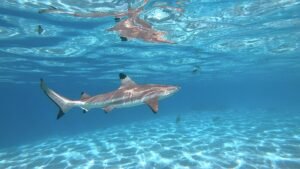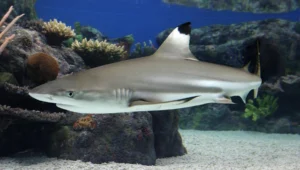The Black Tip Reef Shark and its Habitat
The Black Tip Reef Shark is well-adapted to its habitat and can be found in a wide range of environments within the Indo-Pacific region. These sharks are particularly abundant in areas with high coral cover, as they rely on the reef for both food and shelter. The lagoons, channels, and outer reef slopes that they frequent provide them with ample opportunities to hunt for prey and seek refuge from potential predators.
In addition to their preference for coral reef habitats, Black Tip Reef Sharks are known to venture into other types of marine environments as well. They have been observed in estuaries, mangrove swamps, and even in the open ocean. This versatility in habitat selection allows them to adapt to changing conditions and find suitable areas for feeding and reproduction.
The distribution of the Black Tip Reef Shark is quite extensive, spanning a vast range of locations throughout the Indo-Pacific region. Starting from the Red Sea and East Africa, these sharks can be found in the waters surrounding the Arabian Peninsula and the Gulf of Aden. Moving eastwards, they inhabit the Indian Ocean, including the waters off the coasts of India, Sri Lanka, and the Maldives.
Continuing further east, the distribution of the Black Tip Reef Shark extends to Southeast Asia, where they are commonly sighted in the waters of the Philippines, Thailand, Indonesia, and Malaysia. These sharks are also prevalent in the Pacific Islands, including Papua New Guinea, Fiji, and the Solomon Islands.
One of the most well-known areas where Black Tip Reef Sharks can be found is the Great Barrier Reef in Australia. This iconic reef system provides an ideal habitat for these sharks, with its extensive coral formations and abundant marine life. The warm waters surrounding the Great Barrier Reef offer the perfect conditions for the Black Tip Reef Shark to thrive, and they can be seen patrolling the reef in search of prey.
The distribution of the Black Tip Reef Shark is not limited to the aforementioned locations, as they have also been sighted in other parts of the world. These include the Seychelles in the western Indian Ocean, the Andaman and Nicobar Islands in the Bay of Bengal, and the Marshall Islands in the central Pacific Ocean.

Feeding Habits of the Black Tip Reef Shark
When hunting, Black Tip Reef Sharks rely heavily on their sense of smell, which is highly developed. They can detect the scent of blood or injured prey from miles away. This keen sense of smell enables them to locate potential food sources even in murky waters where visibility is poor.
In addition to their sense of smell, Black Tip Reef Sharks also have excellent hearing. They can detect the low-frequency sounds produced by struggling or injured prey, allowing them to pinpoint their location accurately. This gives them a significant advantage when hunting in the dark or in areas with limited visibility.
Once a Black Tip Reef Shark has located its prey, it will use its swift swimming abilities to approach its target silently. These sharks are incredibly agile swimmers and can quickly change direction or accelerate to catch their prey off guard.
When the shark is within striking range, it will launch itself towards the prey, using its powerful jaws and sharp teeth to deliver a quick and deadly bite. The serrated teeth of the Black Tip Reef Shark are perfectly adapted for tearing through flesh and holding onto struggling prey.
After capturing its prey, the Black Tip Reef Shark will consume it whole or tear it into smaller pieces. They have a unique ability to dislocate their jaws, allowing them to swallow prey that is larger than their mouths. This flexibility in their jaw structure enables them to consume a wide range of prey sizes.
Overall, the feeding habits of the Black Tip Reef Shark are well-suited to their environment and lifestyle. Their ability to hunt efficiently in low-light conditions and their adaptability in consuming various prey species make them highly successful predators in the coral reef ecosystem.
Hearing Adaptations of the Black Tip Reef Shark
In addition to their other sensory adaptations, Black Tip Reef Sharks also have a well-developed sense of hearing. They possess a pair of small openings on either side of their head called spiracles, which are connected to their inner ear.
These spiracles allow the shark to detect and localize sounds in the water, including the movements and vibrations produced by their prey. This sense of hearing is particularly important when hunting in areas with poor visibility, as it allows the shark to rely on sound cues to locate and ambush their prey.
The combination of their electroreception, vision, olfaction, lateral line system, and hearing gives Black Tip Reef Sharks a comprehensive set of sensory abilities that enable them to effectively detect, locate, and capture their prey in the challenging and diverse reef ecosystem.
These adaptations have evolved over time to help the shark survive and thrive in its natural habitat, ensuring its success as an apex predator in the coral reef ecosystem.
